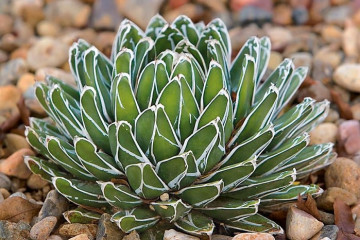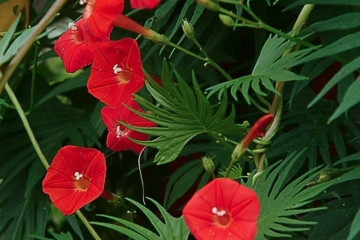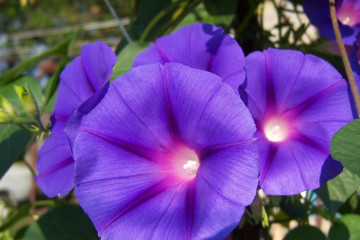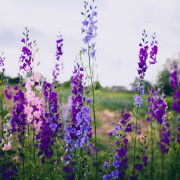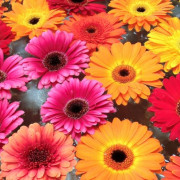Amaranth plant
Content:
The plant, which was grown by the Aztecs and Incas on the same bed with potatoes, beans, can be compared in value to corn or cotton. The seeds of this crop are used to make flour. These are all amaranth - a plant with unique medicinal properties that can be completely used for food - from seeds to stems.
Origin and appearance of culture

Unique plant amaranth
Shchiritsa, or amaranth, is an annual or perennial herb. The homeland of the culture is the land of the ancient civilizations of the Americas, the Mayans, Incas and Aztecs. It was cultivated in the same way as tomatoes, corn, peppers and other plants.
Use in Europe became possible only in the middle of the 20th century, when the stamp of an attribute of pagan rituals was removed from amaranth. In the agriculture of those times, preference was given to the usual wheat, barley, rye, and the squid was at the level of the weed, into which once cultivated species were reborn.
Description of culture
Amaranth is a herb from the Amaranth family. Although it is not a cereal crop, its seeds are often referred to as cereal in the same way as wheat, rye, and barley.
Amaranth grass serves as a good green manure, enriching the soil with nitrogen. The plant can be annual or perennial, its height is from 15 to 80 cm. The pigmentation of the culture is green or purple-red. Some varieties have root vegetables. The leaves are oblong with short and long petioles, depending on the location on the stem. Amaranth flowers are small, collected in panicle inflorescences.
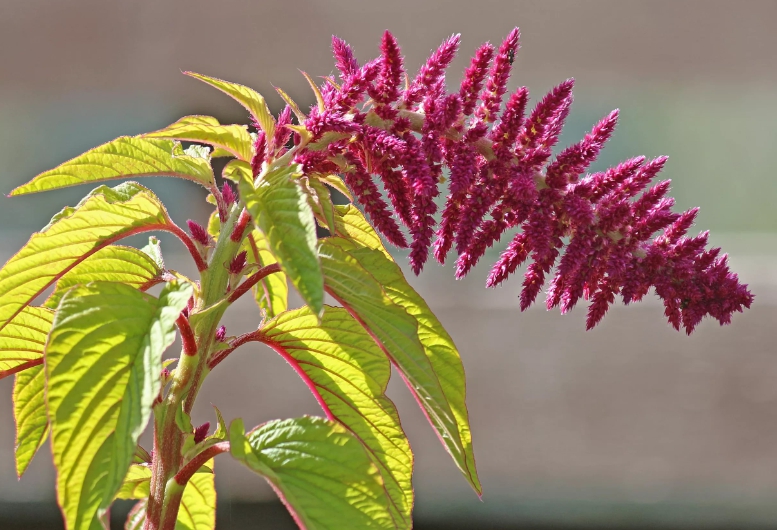
Paniculate inflorescence of a flower
Botanists describe the amaranth fruit as a nut or capsule with numerous seeds that easily fall out of the fruit and are carried with the wind.
Amaranth: application and useful properties of culture
The culture is used for several purposes at once.
The use of the plant in traditional medicine
Many healers know what a plant is like amaranth is a cure for many diseases. Shiritsa is used for skin diseases, diseases of the heart and gastrointestinal tract. The infusion of the plant is beneficial for enuresis and inflammation of the genitourinary system.
Seeds and leaves are used to prevent colds, and seed oil is useful for burns, bedsores, insect bites. For the treatment of inflammatory processes of the oral mucosa, juice from the leaves is used.
The use of culture for food purposes
You can cook from almost all parts of the shiritsa (leaves, stems, seeds). One vegetable variety of amaranth - dwarf White Leaf (translated as white leaf) - can be grown on a windowsill even in winter. It has juicy, tender, tasty light leaves and stems.
Young amaranth leaves replace spinach, they are used in salads, soups, hot dishes. Dried leaves and seeds are brewed with Ivan tea in a 2: 1 ratio.
You can make delicious porridge from the seeds, but amaranth cereals are cooked for quite a long time.

Amaranth porridge - tasty and healthy food
The seed oil of the plant, which comes out almost 3 times more than other grains, can be used as a salad dressing. It is permissible to fry on it, it is added to baked goods, first and second courses.
The flour made from amaranth seeds is beneficial for people with celiac disease as it is gluten-free. Amaranth flour is added to baked goods, to thicken sauces or as a breading.
Sprouted seeds are used in cereals, salads, soups. They can even be fermented like cabbage.
From what was once considered a wild weed plant, recipes can be easily found in many of today's health food cookbooks.
However, people with cholelithiasis and urolithiasis, inflammation of the pancreas and gallbladder should not hope for the healing properties of the shiritsa. In such cases, amaranth has a contraindication and can harm the body. Its use should be excluded or carried out only on the advice of a doctor.
Beneficial features
Few fruits or vegetables can be compared to this crop in terms of the number of useful components:
- Amaranth seeds contain calcium, magnesium, phosphorus, vitamins B, C, E, D, as well as unsaturated fatty acids.
- The content of the essential amino acid lysine in a plant is twice as high as in wheat and corn.
- The seeds are rich in protein on a par with cow's milk.
- A useful component of the plant - the unsaturated carbohydrate squalene - saturates the tissues of the body with oxygen, fights cancer cells, increases immunity and preserves the youth of the body. Such a valuable carbohydrate is found in the liver of a shark, but the oil of the first extraction from amaranth grain contains 4 times more of it.
- Also, herbaceous crops are used as an additional source of pectin to lower blood cholesterol levels.

Amaranth grown in the country will be an excellent natural medicine cabinet and food supplement
Popular amaranth species and varieties
In nature, there are more than 60 varieties and varieties of squid. But only a few varieties are suitable for use in agriculture and horticulture, the rest are considered weeds.
Plants are used both in single and group plantings as wall decor, fence or flower beds, borders.
Amaranth tricolor Illumination
Tall, up to 1 m, erect shrub with variegated foliage - from yellow to orange-red. It grows quickly, forming a strong trunk. The leaves are large, multi-colored, thanks to this, the plant can look like a blazing flame. It blooms in small panicles from June to the onset of frost.

Squid variety tricolor Illumination
Amaranth tailed
This variety is most often grown in flower beds, as the plant has an attractive appearance: large leaves of a green or purple hue, small flowers of raspberry, red and yellow-green inflorescences in the form of a "fox's tail". The height of such a plant can reach 1.5 m, and the length of inflorescences is 45 cm. It blooms from June to October.
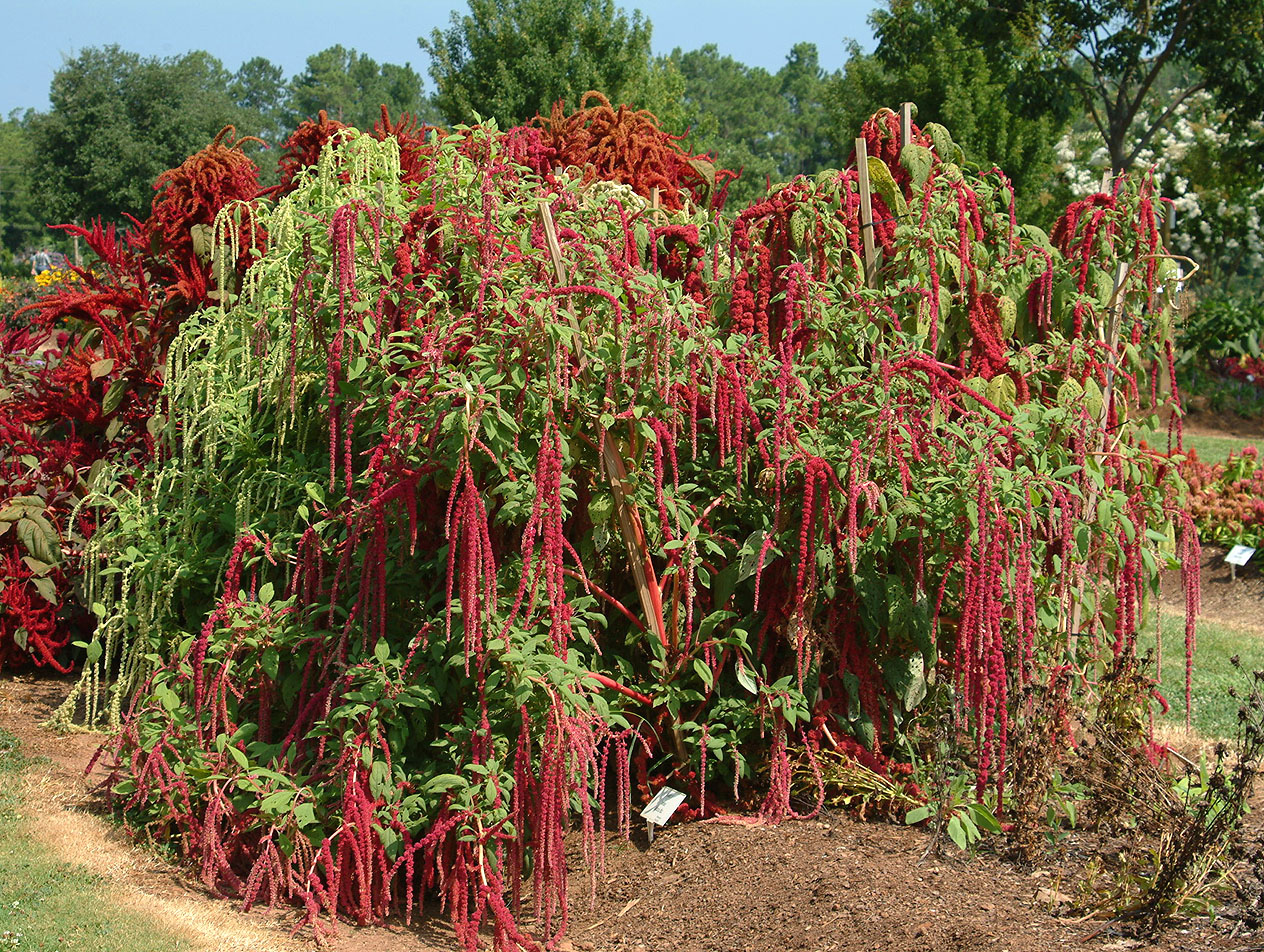
Luxurious tailed amaranth bush
Amaranth thrown back
This species of squid grows in almost every area, but not everyone sees it as a useful crop, considering it a weed. This herbaceous plant up to 90 cm high is easily recognizable by its small, yellowish-green inflorescences. Blooms from July to September. The rhizome has a pink tint.

A well-known weed is a healthy food
Amaranth red
This variety belongs to the type of tricolor amaranth and has a rich dark red hue. Despite the fact that the plant is annual, it is capable of reaching a height of up to 1.5 m.Deep red color is obtained in rather hot conditions. Crimson paniculate inflorescences, similar to feathers, grow on long, straight stems.
This vegetable crop is widely used in cooking: from young tender leaves, which are added to salads, and ending with seeds for adding to cereals and baked goods.

Amaranth red is widely used for culinary purposes.
Landing in open ground
Vegetable and ornamental crops are easy to grow in the garden, they are unpretentious in cultivation and further care, they easily tolerate drought and can withstand temperatures as low as 0 ° C. Plants are bred using seeds by direct sowing or seedlings.
Amaranth: growing from seed
When to plant seeds to enjoy a salad of juicy young amaranth leaves at the beginning of summer? Direct sowing into the soil is carried out at the end of April or in May. For seedlings, crops are sown at the end of March, and seedlings are transferred to open ground in the second half of May.
Optimal location
The crops are not whimsical to the composition of the soil, but sod, podzolic or sandy loam soils will be the best for them. It is permissible to plant amaranth after any early ripening plant; it can be sown in the place where previously wheat, corn or potatoes were.
Preparation before landing
Preparation begins in the fall after harvest. During the digging, well-rotted manure or compost is introduced into the area where the planting of the flower is planned. Mineral dressings can be used. In the spring, the bed is cleared of weeds and weeded. During this period, nitrogen fertilizers should not be abused, as this can lead to the deposition of nitrates in the stems and leaves.
Step-by-step planting process
The step-by-step landing algorithm includes the following steps:
- Since the seeds are very small in size, they are mixed with river sand or ash.
- For one hundred square meters, 15 g of seeds are normally sown.
- After sowing, the soil is slightly added dropwise.
- After 14 days, the first shoots appear, which must be thinned out.
Seedlings are grown in containers with loose nutrient soil. The sown seeds are sprinkled with moist soil and create a greenhouse environment. The first shoots appear within 12 days. The pick is carried out after the appearance of the first true leaf. In open ground, seedlings are transferred in the second half of May, when stable warm weather sets in.
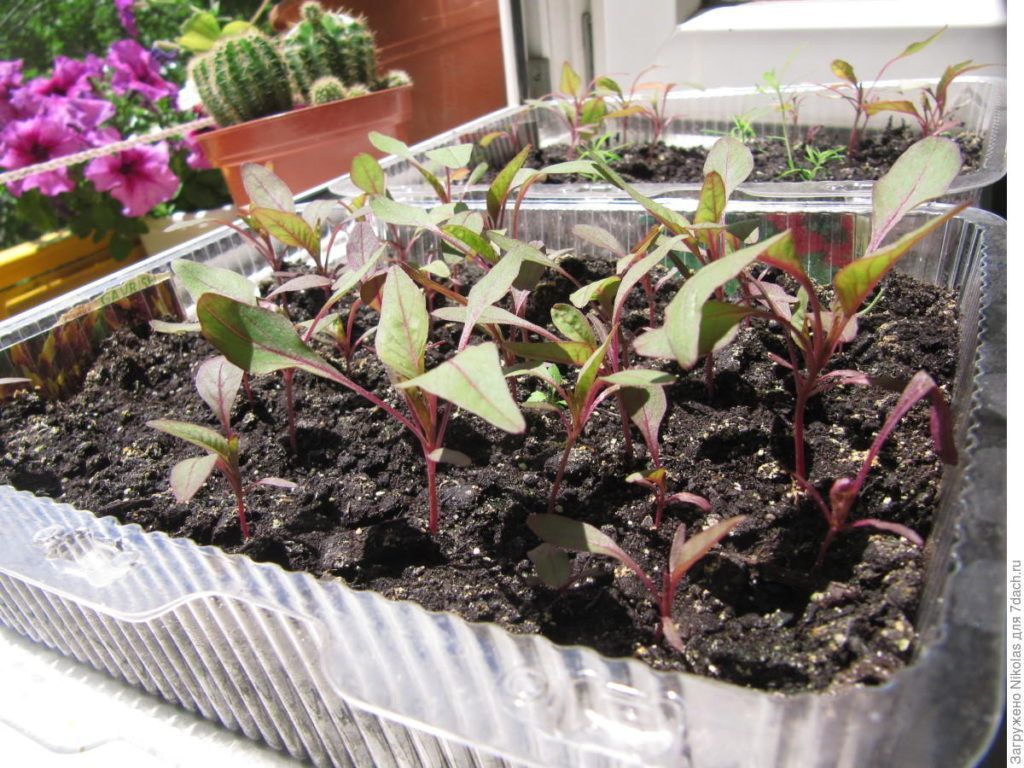
Seedlings of vegetable crops of amaranth
Care
At first, amaranth grows slowly, but as nutrients accumulate, plant development accelerates. It is easier to care for a flower than for other inhabitants of the garden.
Watering
The flower tolerates dry weather well, but still do not forget to water it on especially hot days. It is better to do this in the evening. After the amaranth has grown enough greenery, watering can be practically stopped.
Top dressing
During the season, 3-4 feeding is carried out with special complex fertilizers or a mixture of mullein with ash. When using flower leaves for food, you should not abuse nitrogen fertilizers.
Weeding and weeding
Amaranth is a green manure, so weeds practically do not grow around the flower. Occasionally emerging weeds can be pulled out and weeded the garden along the way. Frequent weeding is done during the period of active growth. Mulching the soil around the stem can be helpful to retain heat and moisture.
Pinching
You can increase the yield of this unique crop by pinching the top. This procedure will stimulate the growth of side shoots and ensure a good harvest.
Recently, amaranth has become very popular all over the world due to its large number of useful properties, versatility in use and unpretentiousness. You can even grow it at home, without spending a lot of time and effort on it.Thanks to easy care and endurance, the culture will supply gardeners with useful substances for a long time.
